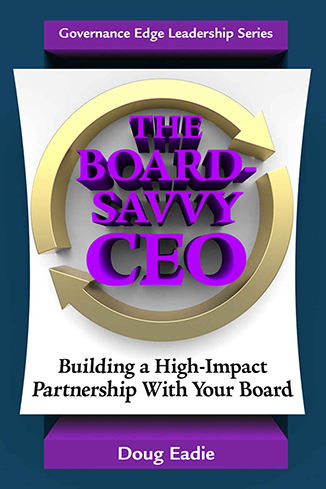A two-person executive office consisting of a chief executive officer and chief operating officer (typically known as “COO”) is a staple in the for-profit sector. This set-up has the CEO focusing on overall corporate strategy, governance, and the external world, while the COO oversees all internal operations and directly supervises members of the executive management team. These days I’m seeing the configuration more frequently in larger nonprofits where several senior executives once reported directly to the CEO. There’s a pretty compelling reason for adopting this executive management structure: freeing up the CEO to focus upward and outward – interacting intensively with her board of directors, promoting her organization’s image in the wider world, and building really solid working relationships with key stakeholder organizations, such as funders, regulatory agencies, and member chapters.
But despite the powerful rationale for the CEO-COO structure, it tends to be quite fragile and prone to erode quickly, especially in its infancy, and has proved to be challenging to sustain over the longer run, as I’ve learned over the course of a number of coaching sessions in recent years. I’m reminded of a coaching engagement a couple of years ago involving the CEO and COO of an international professional association. Their executive office was clearly endangered. Tension had been pretty high from the very beginning of this (in context quite daring) executive management experiment and had recently grown to the point where a parting of the ways (meaning the COO’s exit, of course) seemed almost certain. The culprits threatening what seemed like a very sensible step forward on the executive leadership front? Perhaps most important, the CEO, who’d risen through the association’s staff ranks and been at the helm for a decade, was just plain unable to disengage from hands-on involvement in internal management. He was constantly looking over his COO’s shoulder, often second-guessing her decisions (most recently questioning her choice of a new CFO), and even rushing to the rescue when he thought an issue wasn’t being handled well.
Their radically different styles exacerbated the tension. The CEO was a real people-person, a true hail-fellow-well-met, who’d warmly welcomed a steady stream of executive team members through his always open door. By contrast, the COO employed a much more formal and aloof management style, expecting her direct reports not only to make appointments but also to provide her with detailed issue analyses before meetings. No wonder the senior executives who’d reported directly to the CEO felt cut off and emotionally abandoned. And it didn’t help that this CEO and his COO had never worked out a formal process for regularly communicating with each other, identifying issues, and nipping problems in the bud.
I’m pleased to report that association’s CEO-COO structure survived, and, two years later, it appears pretty solid. Why the turn-around? For one thing, the CEO was willing and able to muster the self-discipline to change his micro-managing ways. Also, these executive office partners set up a weekly meeting to discuss issues that might jeopardize their partnership, and the CEO at least once a month chairs the weekly executive management team meeting, providing his former direct reports enough access to ease their angst. But the problems that threatened this precious, high-stakes relationship might have been avoided. The next post at this blog will feature a podcast by Jim McGuirk, Executive Director/CEO of Astor Services for Children & Families, and Renee´ Fillette, his Chief Operating Officer, who will tell us the right way to proceed in building a solid CEO-COO partnership. And be on the lookout for a future post examining a popular alternative to the CEO-COO structure: creating a chief of staff in the CEO’s office.






